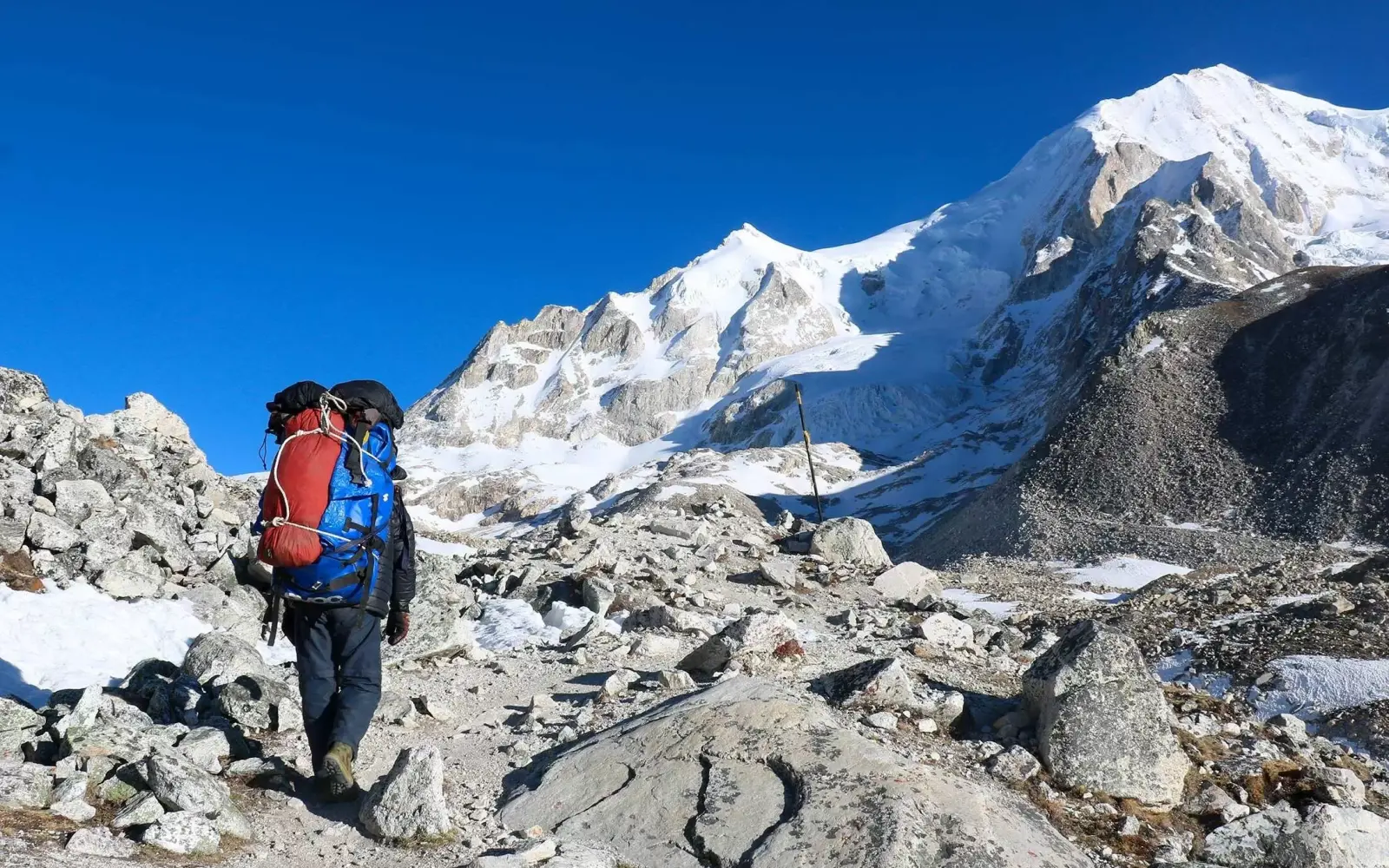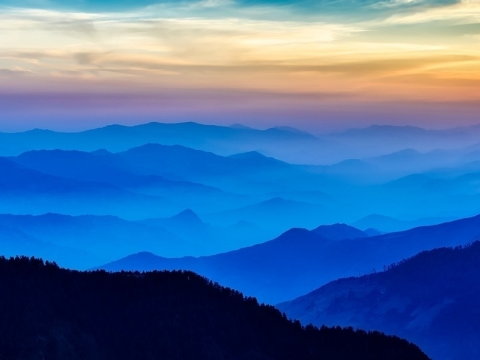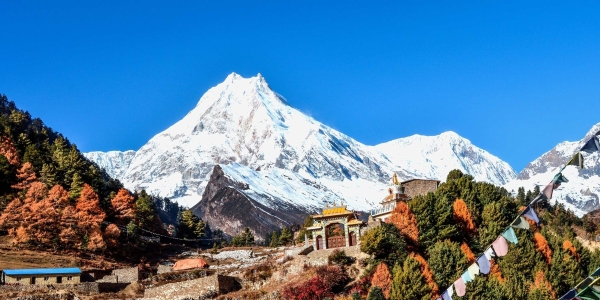Top 10 Trekking in Nepal
Nepal is a trekker's paradise, with its majestic mountain ranges, diverse landscapes, and rich cultu...

Nepal is a premier destination for trekking and adventure tourism, known worldwide for its rich cultural heritage, breathtaking Himalayan landscapes, and diverse natural beauty. With a wide variety of trekking routes, ranging from short hikes to challenging high-altitude expeditions, Nepal offers something for every traveler. However, choosing the right season for trekking or tours is essential to fully enjoy the experience. The country experiences four distinct seasons: spring, summer (monsoon), autumn, and winter. Of these, spring (March to May) and autumn (September to November) are widely considered the best times to explore the mountains and cultural regions.
At Himalayan Forever Treks, we specialize in organizing safe, customized, and enriching trekking and tour experiences throughout the year. We recommend spring and autumn as ideal seasons due to their stable weather, clear mountain views, and access to various trekking routes at their finest. While each season has its unique appeal, spring and autumn offer a balance of comfortable temperatures, beautiful landscapes, and cultural vibrancy that greatly enhance your adventure in Nepal. Whether you're trekking to Everest Base Camp, exploring the Annapurna region, or enjoying a cultural tour in the Kathmandu Valley, planning your trip during these seasons ensures a memorable and enjoyable journey.
Highlights:
Spring is a magical time to trek in Nepal. From March to May, the Himalayan foothills come alive with vibrant colors and fresh air, as the forests bloom with rhododendrons, magnolias, and wildflowers. The weather is relatively warm and stable, making it ideal for both high-altitude treks and lower elevation hikes. Days are longer and clearer, offering excellent visibility of the snow-capped peaks. Iconic trails like the Everest Base Camp, Annapurna Base Camp, Ghorepani Poon Hill, and Langtang Valley are especially beautiful during this season. Temperatures in the mountains are comfortable, and the skies often remain crystal clear in the mornings, with occasional clouds developing in the afternoons.
For nature lovers, spring is one of the most rewarding seasons. The blooming rhododendron forests—Nepal's national flower—add a colorful charm to the trails, particularly in the Annapurna and Langtang regions. The wildlife becomes more active, and birds return from migration, offering rich experiences for birdwatchers and photographers. At Himalayan Forever Treks, we recommend spring for trekkers seeking a balance of scenic beauty, moderate temperatures, and fewer weather-related disruptions. Whether you're a seasoned hiker or a first-time trekker, spring provides an inspiring environment to connect with nature and immerse yourself in Nepal’s landscapes.
Spring Highlights:
Autumn is widely regarded as the best time of year for trekking in Nepal. Lasting from September through November, it follows the monsoon season, resulting in freshly washed landscapes, clean air, and unparalleled views of the Himalayas. The weather is dry, stable, and predictable—perfect for long treks that require consistent trail conditions. Visibility is at its best, with clear skies that allow trekkers to enjoy uninterrupted panoramas of peaks like Mount Everest, Annapurna, Dhaulagiri, and Makalu. Popular trekking routes are bustling with international travelers, creating a vibrant and social atmosphere along the trails.
Autumn also coincides with Nepal’s major festivals, including Dashain and Tihar, offering a unique opportunity to witness and even participate in local cultural celebrations. With the fields lush from the monsoon rains, the villages look picturesque, and cultural interactions are especially rewarding. At Himalayan Forever Treks, we often recommend autumn for both trekking and cultural tours, as the experience blends natural beauty with rich tradition. Whether you’re hiking to a remote mountain base camp or exploring the UNESCO World Heritage Sites around Kathmandu, autumn ensures optimal conditions for travel, safety, and memorable adventures.
Autumn Highlights:
Winter in Nepal, spanning from December to February, brings cold temperatures and snow in higher elevations, but it also offers a peaceful and serene trekking experience. This is the off-peak season when trails are less crowded, skies remain mostly clear, and the Himalayan panoramas are sharp and majestic. For those who don’t mind the cold, winter can be a magical time to trek—especially in the lower to mid-altitude regions such as Ghorepani Poon Hill, Chisapani-Nagarkot, Helambu, or even parts of the Annapurna foothills. Daytime temperatures are moderate in lower regions, although nights can get very cold, especially above 3,000 meters.
Winter trekking is perfect for solitude seekers and photographers looking for untouched, snow-covered landscapes. At Himalayan Forever Treks, we guide clients through safe and scenic winter routes that avoid the dangers of heavy snowfall or closed mountain passes. While high passes like Thorong La or Cho La may be inaccessible due to snow, lower treks offer exceptional views and cultural immersion with local communities. The crisp air, fewer trekkers, and tranquil mountain atmosphere create a unique charm for winter expeditions.
Winter Highlights:
Monsoon (June to August) – Off-Season Challenges and Rewards
The monsoon season in Nepal occurs from June to August, bringing heavy rainfall, lush greenery, and a dramatic atmosphere to the landscape. This is considered the off-season for trekking due to frequent rain, slippery trails, and potential landslides in some areas. However, the monsoon also offers unique rewards. The countryside becomes incredibly vibrant, with terraced rice fields glowing in various shades of green and waterfalls in full force. It’s a time of agricultural activity and cultural significance, giving travelers a more authentic glimpse of rural life. The weather is warm and humid, especially in lower elevations.
Despite the challenges, Himalayan Forever Treks offers tailored experiences during the monsoon, particularly in rain-shadow areas such as Upper Mustang, Dolpo, and parts of the Manang region, where rainfall is significantly lower. These regions remain relatively dry and accessible, with fewer tourists and dramatic landscapes that are unique to this time of year. For travelers seeking solitude and cultural immersion without the crowds, monsoon treks can be deeply rewarding—just be prepared for some rain and muddy conditions.
Monsoon Highlights:
Each region in Nepal has unique geographical features and microclimates, which means the best trekking season can vary depending on where you go. At Himalayan Forever Treks, we help clients choose their destination based on both their personal preferences and the seasonal advantages of each region.
Everest Region:
The best time to trek in the Everest region is autumn (September to November) and spring (March to May). These seasons offer clear skies, stable weather, and incredible views of Mount Everest, Lhotse, Ama Dablam, and other iconic peaks. Winter is possible for shorter treks like Everest Panorama Trek, but high passes can be closed due to snow. Monsoon is not recommended due to flight disruptions and poor visibility.
Annapurna Region:
Both spring and autumn are excellent, but even winter can be enjoyable for lower elevation routes like Ghorepani and Ghandruk. The Annapurna Circuit is ideal in spring or autumn but can be tricky in winter due to snow at Thorong La Pass. Monsoon brings landslides and leeches in forested areas, so it's best avoided unless you're trekking in Mustang.
Langtang Region:
Autumn and spring are ideal for the Langtang Valley Trek, offering great visibility and manageable weather. Winter is suitable but cold. The trails are peaceful, and the local Tamang culture is a highlight. Monsoon can bring landslides and cloudy skies, making this region less desirable during that period.
Restricted Regions (Upper Mustang, Dolpo):
These are best visited in the monsoon (June–August) as they lie in the rain-shadow of the Himalayas and stay dry while the rest of the country is wet. These areas also offer cultural exploration with Tibetan-influenced communities and dramatic desert-like landscapes.
Best Season Summary by Region:
While Nepal is globally celebrated for its trekking trails, the country offers far more than just mountain adventures. With its deep-rooted culture, diverse landscapes, and rich biodiversity, Nepal is a year-round destination for a wide variety of travel interests. At Himalayan Forever Treks, we curate immersive tours beyond trekking, including cultural heritage tours, wildlife safaris, spiritual journeys, and photographic expeditions, all of which shine differently depending on the season. Whether you’re wandering through ancient temples in Kathmandu, visiting Lumbini—the birthplace of Lord Buddha—or exploring the jungles of Chitwan National Park, each season offers its own unique highlights.
In spring and autumn, the weather is mild and pleasant—ideal for city tours, festival experiences, and nature excursions. Spring (March to May) brings blossoming flowers and vibrant greenery, enhancing your experience in national parks like Chitwan and Bardia, where wildlife sightings are common. Autumn (September to November), with its crisp air and clear skies, is perfect for scenic drives, photography, and attending grand Hindu festivals like Dashain and Tihar. Meanwhile, the winter months (December to February) are great for visiting the Kathmandu Valley, Pokhara, and Bandipur, where clear skies and fewer tourists offer a peaceful experience. Even the monsoon (June to August), though rainy, provides opportunities for lush scenic drives, cultural retreats, and trips to drier regions like Upper Mustang or Tansen.
Seasonal Tour Highlights:
With Nepal’s incredible variety in climate, geography, and culture, there's truly no bad time to visit, but selecting the right season based on your travel goals will ensure the best experience. Whether you're drawn to the snow-draped peaks of the Himalayas, the rich traditions of ancient temples, or the call of the jungle, Nepal delivers unforgettable journeys year-round. At Himalayan Forever Treks, our team of experienced guides and travel planners is dedicated to helping you choose the ideal time and destination, ensuring your trip aligns perfectly with your expectations and interests.
For trekking enthusiasts, spring (March–May) and autumn (September–November) remain the top choices, offering stable weather, vibrant scenery, and excellent trail conditions. If you’re seeking cultural richness and less crowded experiences, winter (December–February) provides quiet trails and clear skies in the lower regions. On the other hand, monsoon (June–August) may challenge trekkers, but it's ideal for exploring rain-shadow regions like Upper Mustang or enjoying lush rural life in the hills. Whether you're trekking to Everest Base Camp, visiting the birthplace of Buddha, or photographing jungle wildlife, Nepal adapts beautifully to each season.
At Himalayan Forever Treks, we don’t just lead you through Nepal—we help you connect with it. Let us help you find your perfect time to discover this extraordinary land, whether you're coming for the mountains, the culture, the wildlife, or the people.
Final Thoughts – Choosing the Best Time:

Nepal is a trekker's paradise, with its majestic mountain ranges, diverse landscapes, and rich cultu...

Nepal, nestled in the lap of the Himalayas, is a paradise for trekkers and adventure enthusiasts. Wi...

Nepal is renowned for its majestic Himalayan range, offering some of the world's most iconic trekkin...
